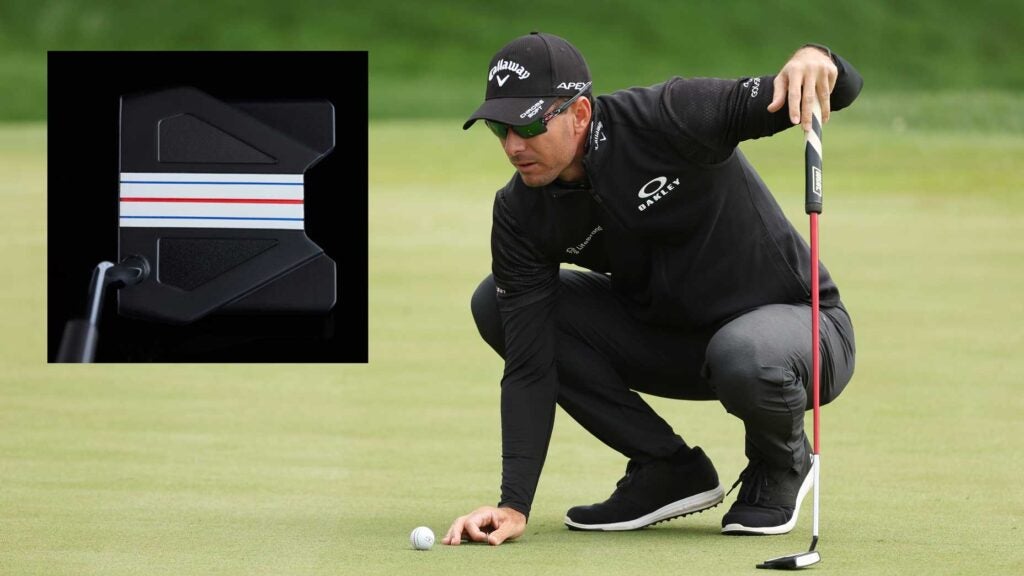Peek around on the PGA Tour and you’ll find infinite ways that players line themselves up to make a stroke. It could be a tee shot, an approach from the trees, or as simple as a three-footer for par.
Plenty of pros use the lines printed on their balls, and some even extend those lines with a marker. Others don’t want any lines to look at, just a blank white golf ball. As for Dylan Frittelli, those lines are absolutely necessary on his ball, but he doesn’t stop there. He needs them on his putter as well.
The South African found himself struggling with the putter years ago and looking for a change, either in equipment or in form. He went through some testing at the 2018 Italian Open that told him he needed perpendicular lines to his target. In other words, lines on the putter that create 90-degree angles to any lines on the golf ball.
And it worked for a time! Frittelli won the 2019 John Deere Classic, contended for a long time at the British Open at Portrush, and then even contended a couple more times in the PGA Tour’s fall season. But as with plenty of pros and their putters, things don’t feel perfect forever.
Toward the end of 2019, Frittelli was ready to change, and he convinced Joe Toulon to give him an Odyssey 10 putter before most other Tour pros could put it in play. He got clearance from Callaway marketing to use it before the putter had even been officially launched. Toulon’s final touch: placing triple track technology on that putter for the first time ever. It just so happened that Frittelli was already using a triple track ball, and it really helped his eyes line up three lines on the ball and three lines on the putter.
Multiple years later, he’s stuck with it. Any putts inside 15 feet, that was his move: ball lines perfect with putter lines. He became the first player on Tour to use a triple track putter and triple track golf ball. But then outside of 15 feet, or with any putts with a lot of break, he’s a bit more experimental.
“This, for me, works well on those short putts,” he says. “But if it’s a three-footer that has like two feet of break or a five-footer with lots of break, I’m not going to use that. I’m not going to be trying to use feel and be creative.”
What, exactly, does be creative mean?
Frittelli pushes the lines to the front of his golf ball, so there is clear, blank, white space resting next to his putter head. He then tracks an imaginary line from the hole to an intermediary spot between his ball and the hole, and then lines up the triple track right at the intermediary.
“I’ve done that since working with my sports psych in college,” he says. “So I see a track from the hole backwards. And then I pick an intermediate spot and set up to that. If that intermediate spot lines up with where I’ve put the line [on the ball] down, then I know I’m in agreement on both topics.”
There is some obviously sweet harmony with a golf ball that has lines on it and a putter head that mimics it exactly. For a pro like Frittelli, whose stroke is a lot better than yours or mine, it’s not so hard to line them up perfectly during the strike. Just don’t ask him to use lines like that off the tee.
“[I want them] out of the way, 100%,” he says. “If I see those lines on the tee I just gravitate [my swing] to where it’s aimed. I know a lot of guys use those lines to line up their tee shots. But for me, it’s such an exact line that if it’s four yards off on a 300-yard shot — if I’m aiming at that flag and it’s like slightly to the right — my mind is not settled.”
